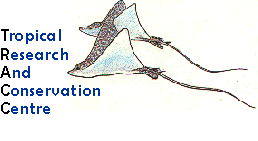|
|
|
|
Blast fishing
|
 |
|
|
|
|
Since the end of the Second World War, coral reefs of the Indo Pacific and especially the South China Sea have been subjected to dynamite or blast fishing. |
|
Originally, blast fishing used commercial dynamite or other explosives but in recent years the trend has been for fishers to make their own bombs using artificial fertilizer.
FUSES SMUGGLED AND USED FOR BLAST FISHING
The fishers do not blast at random but choose the site carefully for maximum catch.
|
The bombs are usually on 5-second fuses and are dropped into the centre of an area judged to have many fish. After the bomb has exploded, the fishers use dip-nets to collect the stunned and dying fish, either from the boat or underwater. |
|
Blast fishers hunt by preference for schooling fish, so larger fish such as sweetlips and groupers which aggregate in groups and hide under large coral heads are specific targets.
|
||||||||
|
|
||||||||
|
Larger fish such as this grouper are much sought after by blast fishers.
SCHOOLS OF BUTTERFLY FISH (ABOVE) ARE ACTIVELY SOUGHT. |
![]()
|BLAST FISHING| |BLAST FISHING FREQUENCY| |ECONOMICS| |BLAST FISHING REGULATIONS| |EFFECTS ON BIODIVERSITY|
|EFFECTS ON CORAL REEFS| |ECOTOURISM PROTECTION|

![]()